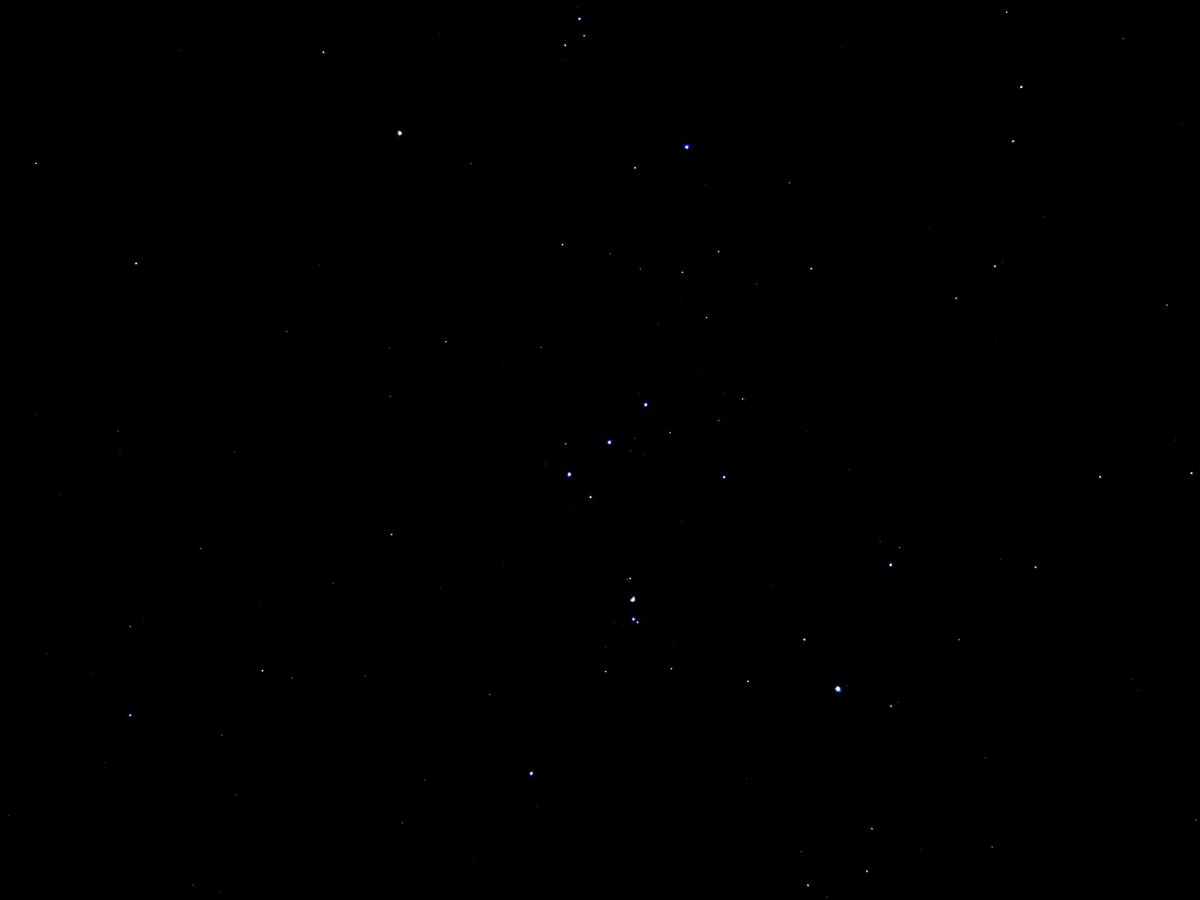Winter in New England means short days, cold weather, dormant plants, changes in animal behavior, and snow – yes, more snow! This season also offers a distinctive and very beautiful night sky. I know winter has arrived when Orion reappears in the heavens.
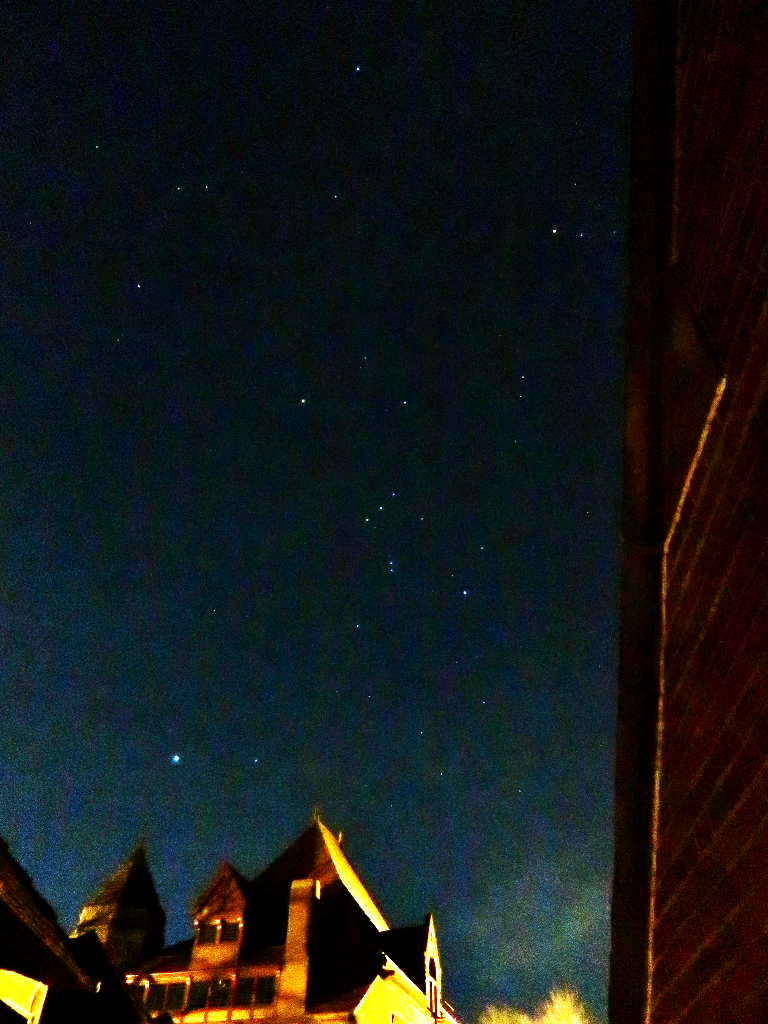
Orion Over Oakes Ames Hall, February 23, 2022
Obviously, the stars in this constellation don’t disappear from the universe during other seasons. It is our perspective from earth that changes. In summer, the constellation is in line with the sun whose light obscures our view. In autumn, its pattern can be seen by late-night stargazers. Towards the beginning of December, though, Orion becomes prominent in the evening when people in the northeastern U.S. are most likely to observe it. When the winter solstice arrives on December 21, Orion can be seen all night, from dusk to dawn.
The view in the above image is from the Ames Free Library’s second floor, looking south towards Oakes Ames Hall. For those of you who are unfamiliar with the constellation, the main outline looks like this:
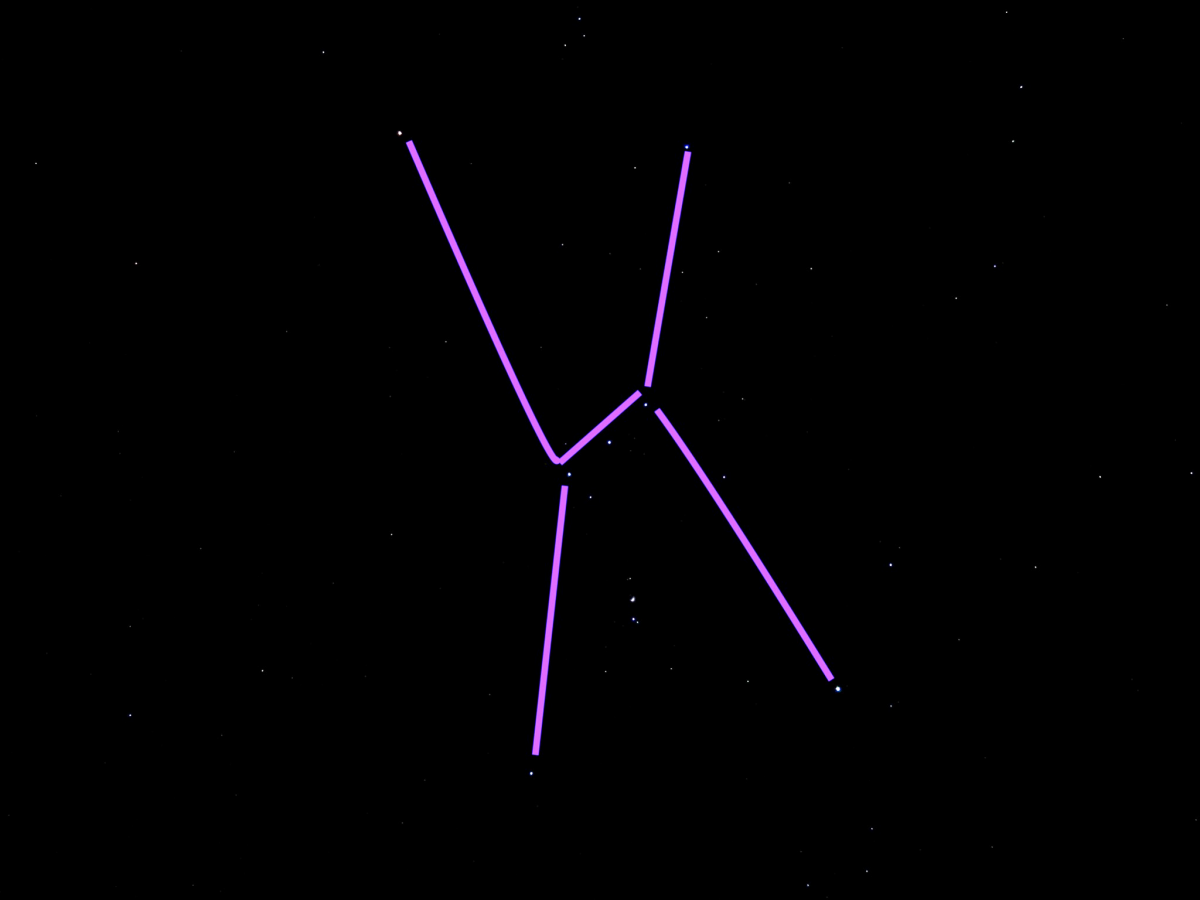
Bright stars mark the shoulders and feet of the hunter, while a three-star belt denotes his waist. Depictions of Orion often include one arm wielding a club and the other holding a shield. Note, also, the row of stars below his belt which form a sword. Artistic renderings vary as do the myths surrounding Orion’s birth, life, and death. The only constant is that he was a strong and skilled hunter - before becoming a constellation! One version with contemporary appeal is that Orion boasted that he would hunt every wild animal on earth. This displeased the earth goddess, Gaia, who sent a giant scorpion to keep him in check. Subsequently, both the hunter and the scorpion became constellations, though they never appear in the sky together.
The science and nature website, EarthSky, calls Orion “the world’s most recognizable constellation,” partly because it can be seen by people in both the northern and southern hemispheres (at different times of the year). What’s more, its abundance of bright stars and recognizable shape make it easy to spot and to remember. Let’s take a brief look at a few of its features.
First there’s the prominent star in the upper left: Betelgeuse, a red supergiant. The enormity of this star tests our imagination. Sky and Telescope tells us, “Betelgeuse has an estimated diameter around a thousand times that of the Sun, with an estimated absolute luminosity of 100,000 times the Sun.” Even the naked eye can detect its red/gold glow.
Opposite to Betelgeuse, on the lower right, is another impressive star: Rigel, a blue-white giant. The two form a nice color contrast which can be emphasized by viewing through slightly out-of-focus binoculars. The blurred image below accentuates their respective colors.
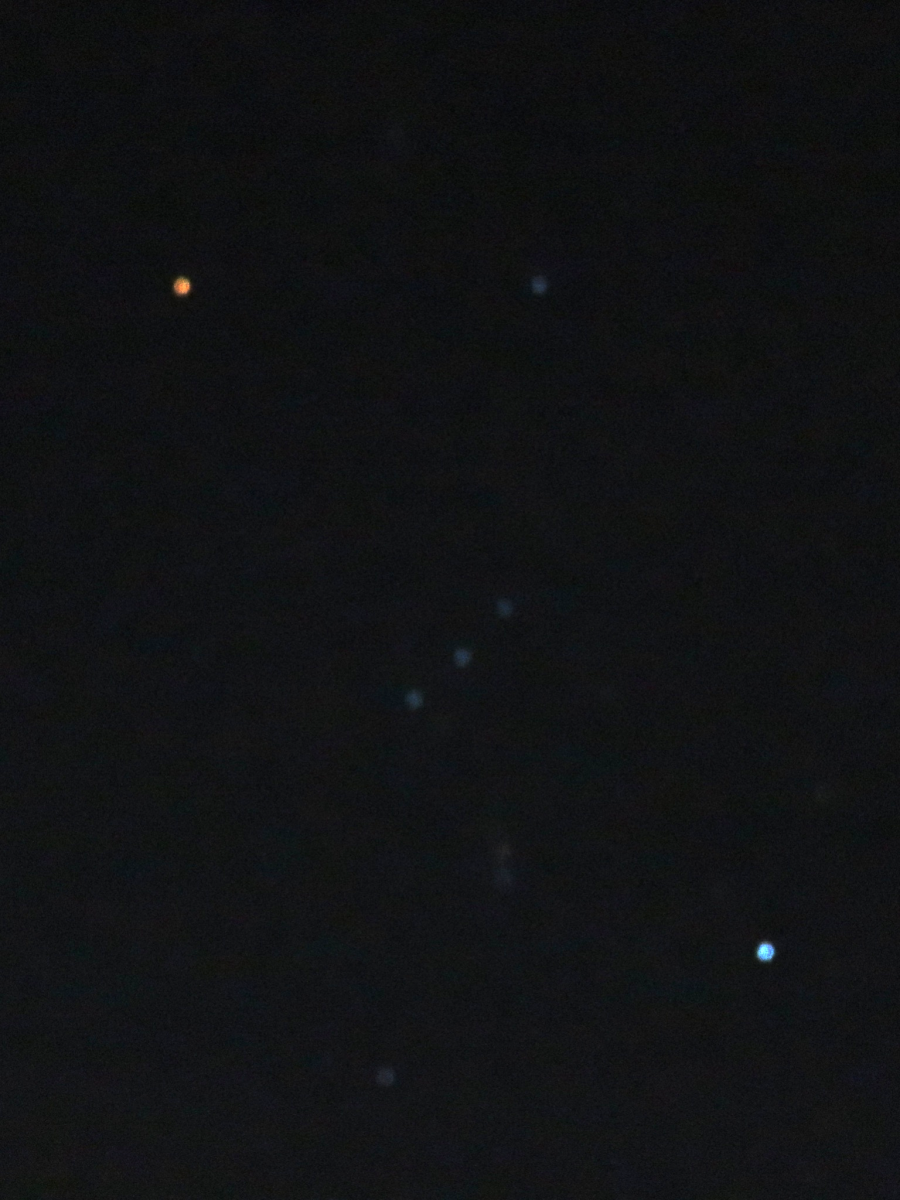
Orion’s three-star belt sets it apart in the night sky, and the constellation’s sword includes several extraordinary features including the magnificent Orion nebula. Images of this cloud of interstellar dust and gas delighted me as a child - and still do.
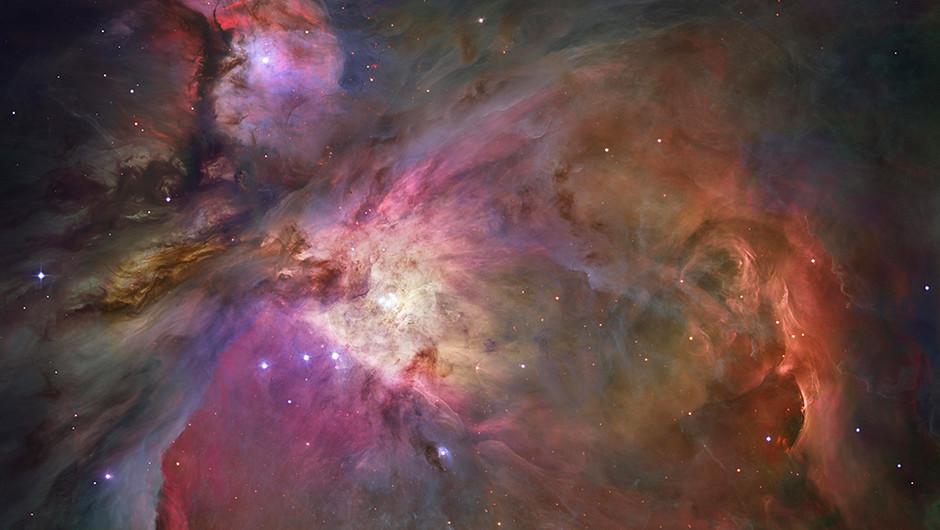
Hubble’s Sharpest View of the Orion Nebula, circa 2004
(Via Flickr, no known copyright restrictions)
Your viewing experience will improve if you can apply low magnification through binoculars or a small telescope. Don’t forget that the Ames Free Library lends its telescope to patrons. As you can see, a simple point-and-shoot camera can reveal the difference between the nebula and stars.
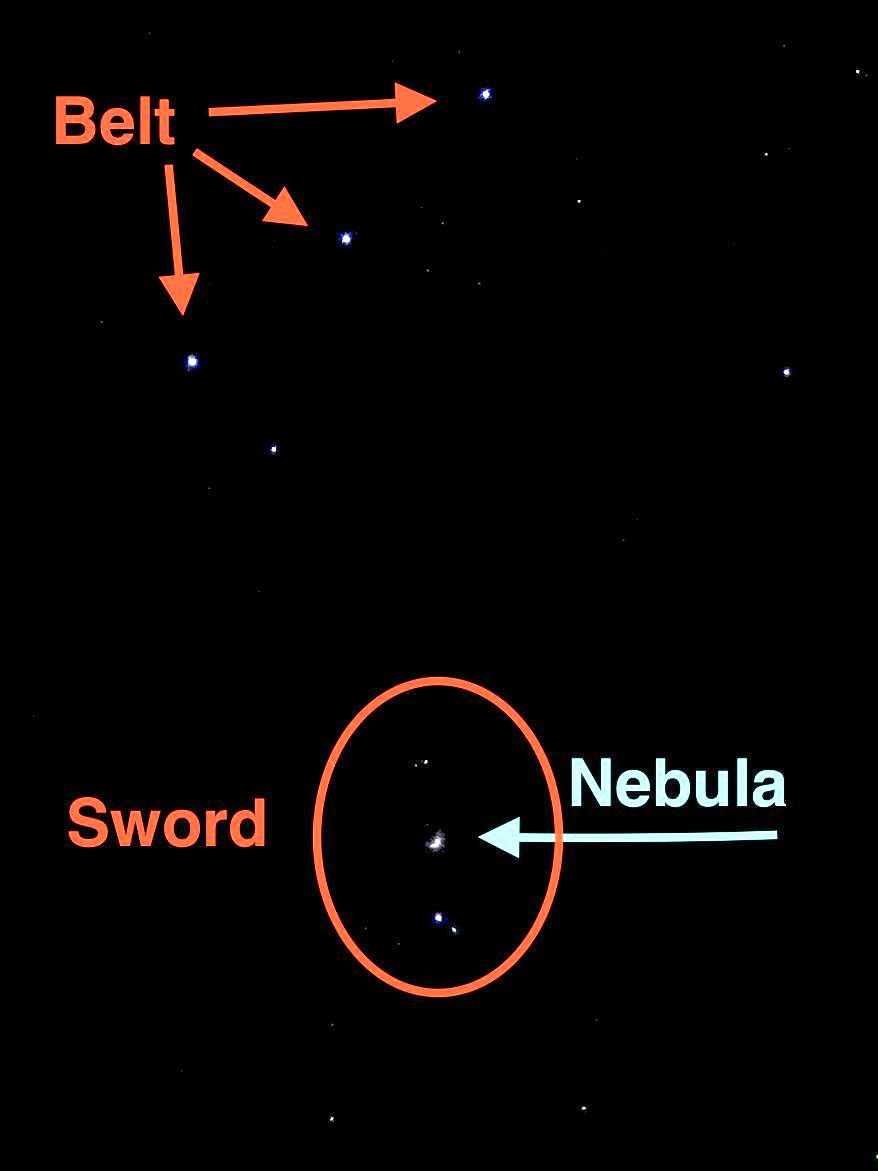
To learn more about viewing Orion’s nebula, double stars, and clusters, see “A Quick Tour of Orion, The Hunter.”
At this stage of winter, Orion is visible for only a few hours per evening, so don’t delay your stargazing! Few nights offer the best conditions, that is, clear skies with little or no moonlight.
During the coming week, Orion could be visible between 7 and 11 p.m. Saturday night might offer your best opportunity: there is a forecast of clear skies, and the crescent moon won’t be visible until close to dawn. Go out at 7:00 p.m., face south, and look for the pattern shown above. As the evening progresses, shift your view towards the southwest/west to follow Orion’s “path” across the sky. If possible, choose a viewing location with little light pollution, the darker the better. The yellow glow of Oakes Ames Hall in our lead photo was created by one bright light in The Hall’s parking lot.
Once you start looking, you may not want to stop with Orion. Sirius and Aldebaran are two bright stars on either side of “the hunter.” If you turn around, you will see the Big Dipper, Cassiopeia, and other circumpolar constellations. I’d recommend that you review Sky & Telescope’s interactive sky charts before heading out, or print a copy to take with you. They are a great resource to guide your explorations. After a little practice, Orion will jump out of the starry sky and guide you through all your winters.
